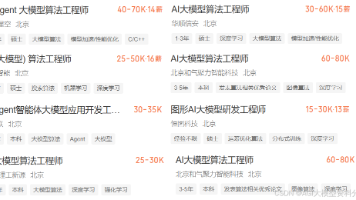AI医疗:大数据守护健康未来
医疗设备产生的大数据涵盖了患者生命体征、影像学检查结果、实验室检测数据等多维度信息。人工智能技术通过高效处理这些数据,实现实时患者健康监测、疾病预警和个性化治疗建议。深度学习模型能够从海量医疗数据中提取特征,建立预测模型,辅助临床决策。随着算法进步和硬件发展,这类系统将更加精准、可靠地服务于患者健康监测。医疗设备如可穿戴设备、监护仪和医学影像设备持续生成结构化与非结构化数据。数据预处理包括缺失值填
人工智能在医疗大数据健康监测中的应用
医疗设备产生的大数据涵盖了患者生命体征、影像学检查结果、实验室检测数据等多维度信息。人工智能技术通过高效处理这些数据,实现实时患者健康监测、疾病预警和个性化治疗建议。深度学习模型能够从海量医疗数据中提取特征,建立预测模型,辅助临床决策。
数据采集与预处理
医疗设备如可穿戴设备、监护仪和医学影像设备持续生成结构化与非结构化数据。数据预处理包括缺失值填充、异常值检测和归一化处理。Python的Pandas库常用于数据清洗:
import pandas as pd
from sklearn.impute import SimpleImputer
from sklearn.preprocessing import MinMaxScaler
# 加载医疗数据
data = pd.read_csv('patient_vitals.csv')
# 处理缺失值
imputer = SimpleImputer(strategy='mean')
data_filled = pd.DataFrame(imputer.fit_transform(data), columns=data.columns)
# 数据归一化
scaler = MinMaxScaler()
normalized_data = scaler.fit_transform(data_filled)
时序数据分析与特征提取
穿戴设备产生的连续生命体征数据具有时序特性。长短时记忆网络(LSTM)适合处理这类数据:
from tensorflow.keras.models import Sequential
from tensorflow.keras.layers import LSTM, Dense
# 构建LSTM模型
model = Sequential()
model.add(LSTM(64, input_shape=(24, 5), return_sequences=True)) # 24小时数据,5个特征
model.add(LSTM(32))
model.add(Dense(1, activation='sigmoid'))
model.compile(loss='binary_crossentropy', optimizer='adam', metrics=['accuracy'])
多模态数据融合
结合来自不同设备的数据需要特征融合技术。图神经网络(GNN)可以处理异构图数据:
import torch
import torch_geometric.nn as geom_nn
class GNNModel(torch.nn.Module):
def __init__(self):
super().__init__()
self.conv1 = geom_nn.GATConv(in_channels=128, out_channels=64)
self.conv2 = geom_nn.GATConv(in_channels=64, out_channels=32)
def forward(self, x, edge_index):
x = self.conv1(x, edge_index)
x = torch.relu(x)
x = self.conv2(x, edge_index)
return x
实时异常检测与预警
孤立森林和自编码器常用于实时异常检测:
from sklearn.ensemble import IsolationForest
from tensorflow.keras.layers import Input, Dense
from tensorflow.keras.models import Model
# 孤立森林模型
clf = IsolationForest(n_estimators=100, contamination=0.01)
clf.fit(training_data)
# 自编码器异常检测
input_layer = Input(shape=(input_dim,))
encoded = Dense(64, activation='relu')(input_layer)
decoded = Dense(input_dim, activation='sigmoid')(encoded)
autoencoder = Model(input_layer, decoded)
autoencoder.compile(optimizer='adam', loss='mse')
个性化健康预测
整合电子健康记录(EHR)和基因组数据可提升预测准确性。Transformer模型处理这类复杂关系:
from transformers import TFBertModel
# 构建基于Transformer的预测模型
transformer = TFBertModel.from_pretrained('bert-base-uncased')
input_ids = tf.keras.layers.Input(shape=(128,), dtype=tf.int32)
outputs = transformer(input_ids)[1]
predictions = tf.keras.layers.Dense(1, activation='sigmoid')(outputs)
model = tf.keras.Model(inputs=input_ids, outputs=predictions)
联邦学习保护数据隐私
医疗数据隐私要求严格,联邦学习允许多机构协作训练模型而不共享原始数据:
import tensorflow_federated as tff
# 定义联邦学习过程
def model_fn():
return tff.learning.from_keras_model(
keras_model=create_keras_model(),
input_spec=input_spec,
loss=tf.keras.losses.BinaryCrossentropy())
federated_averaging = tff.learning.build_federated_averaging_process(
model_fn=model_fn,
client_optimizer_fn=lambda: tf.keras.optimizers.Adam(0.01))
可视化与解释性
SHAP值和LIME技术增强模型可解释性:
import shap
import lime
import lime.lime_tabular
# SHAP解释
explainer = shap.DeepExplainer(model, background_data)
shap_values = explainer.shap_values(test_data)
# LIME解释
explainer = lime.lime_tabular.LimeTabularExplainer(
training_data, mode="classification")
exp = explainer.explain_instance(test_instance, model.predict_proba)
部署与实时监测系统
使用Flask或FastAPI构建实时监测API:
from fastapi import FastAPI
import uvicorn
app = FastAPI()
@app.post("/predict")
async def predict(data: PatientData):
prediction = model.predict(data.features)
return {"prediction": prediction.tolist()}
if __name__ == "__main__":
uvicorn.run(app, host="0.0.0.0", port=8000)
持续学习与模型更新
医疗数据分布随时间变化,在线学习机制保持模型时效性:
from river import linear_model
from river import preprocessing
scaler = preprocessing.StandardScaler()
model = linear_model.LogisticRegression()
for x, y in stream_data:
x_scaled = scaler.learn_one(x).transform_one(x)
model.learn_one(x_scaled, y)
医疗人工智能系统通过上述技术实现了从数据采集到实时决策的完整闭环。随着算法进步和硬件发展,这类系统将更加精准、可靠地服务于患者健康监测。实际部署需考虑医疗合规性、系统鲁棒性和临床工作流程整合等非技术因素。
更多推荐
 已为社区贡献11条内容
已为社区贡献11条内容







所有评论(0)